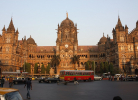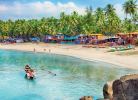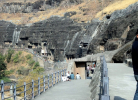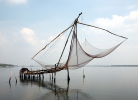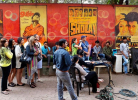How to Ride the Mumbai Local Train
Upon hearing about the Mumbai Local Train, people may get a little defensive about riding it. This is mostly because of the infamous reputation it has gotten in contrast with the Delhi Metro. However, in reality it is one of the most efficient modes of transport used by millions of Mumbaikars on a daily basis.
As a tourist, you can gain a ton of insight into the lives of the citizens of the city that doesn't sleep. It forms the basic foundation for the daily lives of most of the people here. While it cannot be denied that everything you have already heard about the Mumbai Local Train is true. It does have the risk of open doors, is over-crowded, and people constantly travel on its roof.
However, you shouldn't let that stop you from a real adventure by taking an adventure on the Mumbai Local Train. This is your perfect guide to ride on the Mumbai Local Train:
1. Types of Routes
The Mumbai Local is divided into three routes each of which is more than 100km long. These are:
- Western Line – This runs from Churchgate in South Bombay to the Northern part of the city. While this goes through all the developed parts of Mumbai, it does also stop at a lot of places which can make it hard to get to your destination in time.
- Central Line – This runs from Chhatrapati Shivaji Maharaj Terminus in the South part of the city to its North. It has the fewest stops, however is more crowded.
- Harbour Line – This one too runs from the Chhatrapati Shivaji Maharaj Terminus to the Eastern docks, Navi Mumbai, and Panvel. This generally requires you to switch trains, and you can mostly travel while avoiding this line.
2. Where You Can Go
As a tourist, you can visit Mahalaxmi, and Bandra. These are very popular destinations, and will give you a chance to visit some of the most popular attractions in Mumbai. Bandra even has an amazing nightlife which you can enjoy when out with friends.
3. Types of Trains
There are two main categories of trains in the Mumbai Local. These are Fast, and Slow trains, with 12 or 15 carriages. You can identify the train by glancing at the station monitor, and seeing the indicated letter ‘F’ or ‘S’ for the train. Fast trains will only stop at certain stations, so be sure to consult the station map to check before you take your train. You can get some comfort and security features such as having less people in your carriage, and air conditioning by booking first class, and uttam carriages.
4. When to Travel
To avoid getting caught in the daily peril of Mumbai Local's busiest times, you should only travel in it between 11 A.M. and 4 P.M. as this will significantly help you avoid the morning and evening rush hours. If you visit Churchgate at 11:30 A.M, you will also get to witness the dabbawalas delivering the food. Sundays are quite calmer, and a much better time to travel, especially when you use the Western Line.
5. Tickets
The minimum fare for a normal ticket is Rs. 5, Rs. 50 for first class, and Rs. 65 for air conditioned carts. There are several ticket counters at the entrance of each station, and you can avoid their long lines by purchasing a smart card to help you buy tickets from the automatic ticket vending machines.
6. Locating the Train
As a tourist, this can seem a bit challenging at first since the local trains are identified by their final destination, and not the stops in between. In such cases, your best bet is to consult the map and go by the letter ‘F’ or ‘S’. You can also ask the helpful people at the station.
7. Seating Arrangements
The carriages are divided as one for Women, one for Senior Citizens, One for Luggage, One for Patients with Disabilities, First Class Compartment and a general compartment. The best thing you should do is see where most people gather and climb there. Also, if you wish to get on or off the train, you need to forget your manners, and do all you can to get on the train.



















